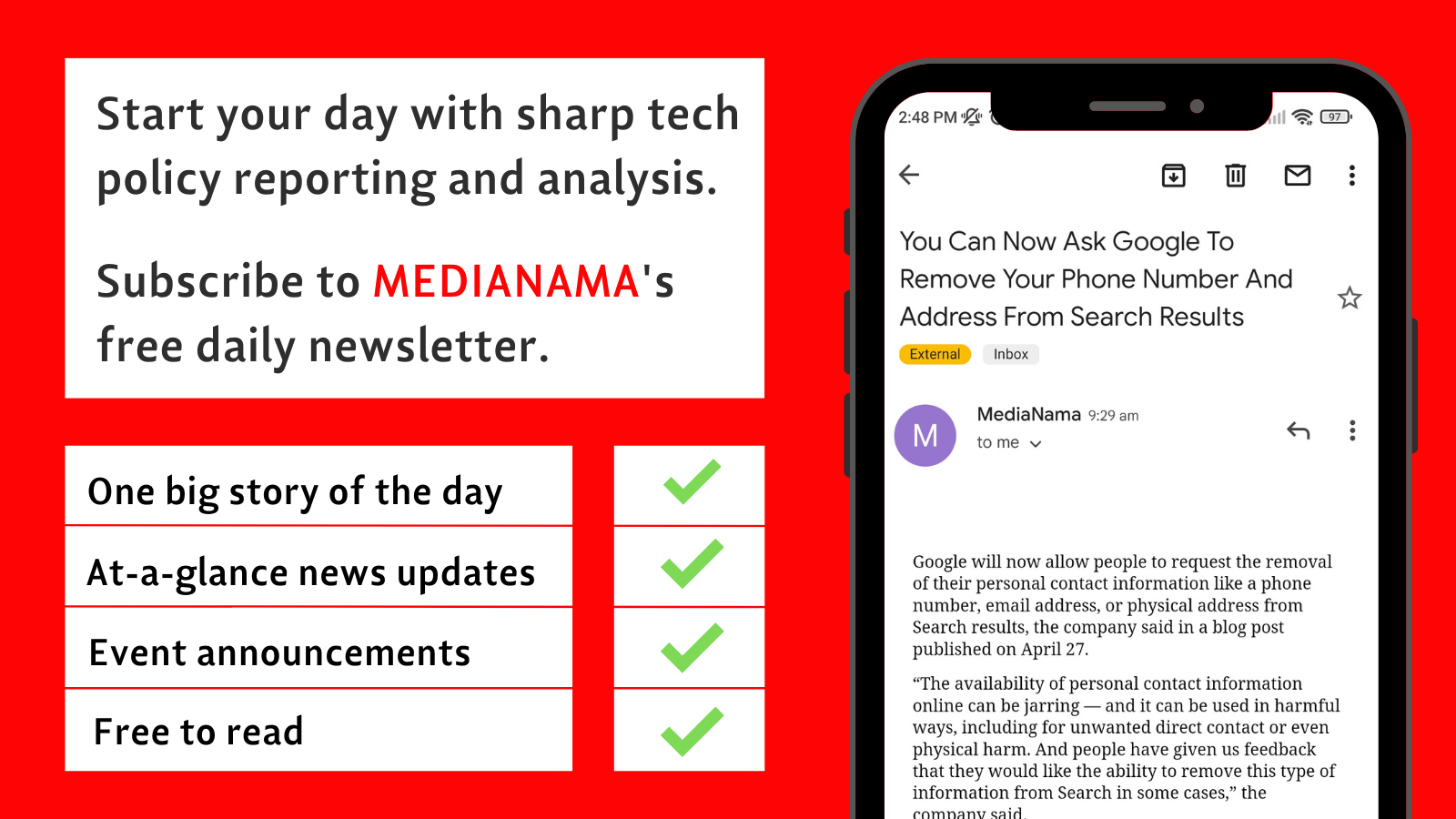“Influencers need to understand their rights as well as responsibilities. They need to protect themselves as well as their followers. Both brands and influencers are equally liable [for misleading consumers]. They need to understand that there is a force of law that bears upon them,” says Manisha Kapoor, CEO and Secretary General, Advertising Standards Council of India (ASCI), on the accountability of influencers towards their followers when they create paid content.
STAY ON TOP OF TECH POLICY: Our daily newsletter with top stories from MediaNama and around the world, delivered to your inbox before 9 AM. Click here to sign up today!
In this interview with MediaNama, Kapoor shares her insights on ASCI’s recent report, ‘Wielding Influence, Nurturing Trust’, and on the advantages and challenges of the evolving influencer marketing ecosystem. We asked Kapoor the following questions and more:
- Who is an influencer and how has the concept evolved over the years?
- What prompted the ASCI to explore the ‘trust factor’ in the influencer ecosystem?
- What factors have boosted influencer marketing in the last few years?
- What major issues with influencer marketing need to be addressed on priority?
- In what ways can the advertising and marketing guidelines go beyond ‘disclosure norms’ to address the impact of misinformation spread by influencers?
- How do we address the problem of impostors and fake followers?
- What ethical concerns should an influencer focus on when collaborating with brands?
- What key areas is ASCI looking into when it comes to regulating the influencer marketing space? And what are its limitations?
Watch the full interview here:
While we encourage you to watch the full video, here are some note-worthy excerpts from the interview:
On the growth of influencer marketing:
“It started in a very organic way where you just had a platform which you could use to express yourself. Whether it was your interest or what you were doing, it was really more organic and platforms were being used more for expression. There’s a multitude of these factors that have come together. Whether it’s the platforms, whether it is the brands, whether it’s influencers, all of them are seeing social media as a way to create certain messages about brands and to even convert that into commerce. I think the consumers are there on these platforms. It’s like you have a place where consumers are there and wherever consumers are there, brands are bound to follow.”
On consumer trust:
“It’s very important in this whole equation, for both brands and influencers, not to forget that it is consumer trust which is fueling the creator economy. What do we need to do to safeguard that? It cannot be like this golden goose that is giving you returns and then you diminish the value of that trust and take advantage of it. That is then not sustainable. At some point of time, consumers will tune out if they find that they are being taken for a ride or influencers or brands are not being transparent. I think it is really in the brands and influencers’ own interest to make sure that consumer and audience trust remains high.”
What irks consumers about paid content?
“I think inherently it’s not as if consumers have a problem with influencers promoting brands so long as they are transparent about it. I think what irks them is that if they are not transparent about it because the consumer is also savvy, they are also in some way content creators themselves. I think it’s also important for influencers, and we’ve said this in our report, is not to be a puppet of the brand, but an interpreter of the brand for their own audiences.”
On misinformation about critical subjects:
“I think there are a few critical categories where influencers have to take on that extra responsibility, like finance, education, health care. When influencers talk about these subjects, I think they must talk from their own experiences and not try and come across as a sector expert if that is not their area of expertise. They must equally pay emphasis and give a full picture to the consumers. […]
I do expect certain norms to come in from sector regulators, most importantly, on who can or who can’t talk about, and what topics can you talk about or not, or what are the caveats that you must give consumers when you talk about certain things. I do see in the next few months that different regulators will work together to try and protect consumers.”
On accountability for consumer harm:
“The brand is liable, but so are influencers. They need to protect themselves and their audiences. And I don’t think you can get away by saying that I didn’t know because the ignorance of the law is no excuse to not follow the law. So, if you’re taking this up as a professional, then you need to be professional about it. You need to understand what laws govern you as an influencer and what laws govern the categories that you’re promoting. The law clearly lays down liabilities for endorsees if you are not truthful…or if you make statements that are misleading. You are bringing something forth to your audiences who trust you first.”
On ASCI’s roles and limitations:
“What we look at is really the content of advertising, that’s the core area that ASCI operates in. A lot of things are, for example, to do with the law. Whether it’s things like surrogate advertising or financial investments. There are regulators, especially, in the finance field, who have a very strong way in which they regulate the financial markets. I think those are issues that ASCI can support but does not have complete jurisdiction over. I don’t think we have the mandate to completely oversee certain sectors or categories. But we will work closely with the government and with the statutory regulators to see how we can assist to contribute for the agenda of consumer protection. Especially, in the digital world…a lot of partners need to come together, including the platforms, the regulators, and the statutory bodies. […]
While ASCI can ask for voluntary compliance, the government can enforce, get fine, it can order for certain ads to be taken off. And in the case of repeat offenders, that is where the force of the law has to come in to keep the ecosystem clean.”
This post is released under a CC-BY-SA 4.0 license. Please feel free to republish on your site, with attribution and a link. Adaptation and rewriting, though allowed, should be true to the original.

Also Read:
- India’s New Guidelines For Social Media Influencers, Explained
- US SEC Charges 8 Social Media Influencers In A $100 Million Stock Manipulation Case
- China Wants Online Influencers To Be “Qualified” On Certain Topics: What Is It About?
- Nearly 40% Of Indian Instagram Influencers Defrauded By Engagement Tools: HypeAuditor































